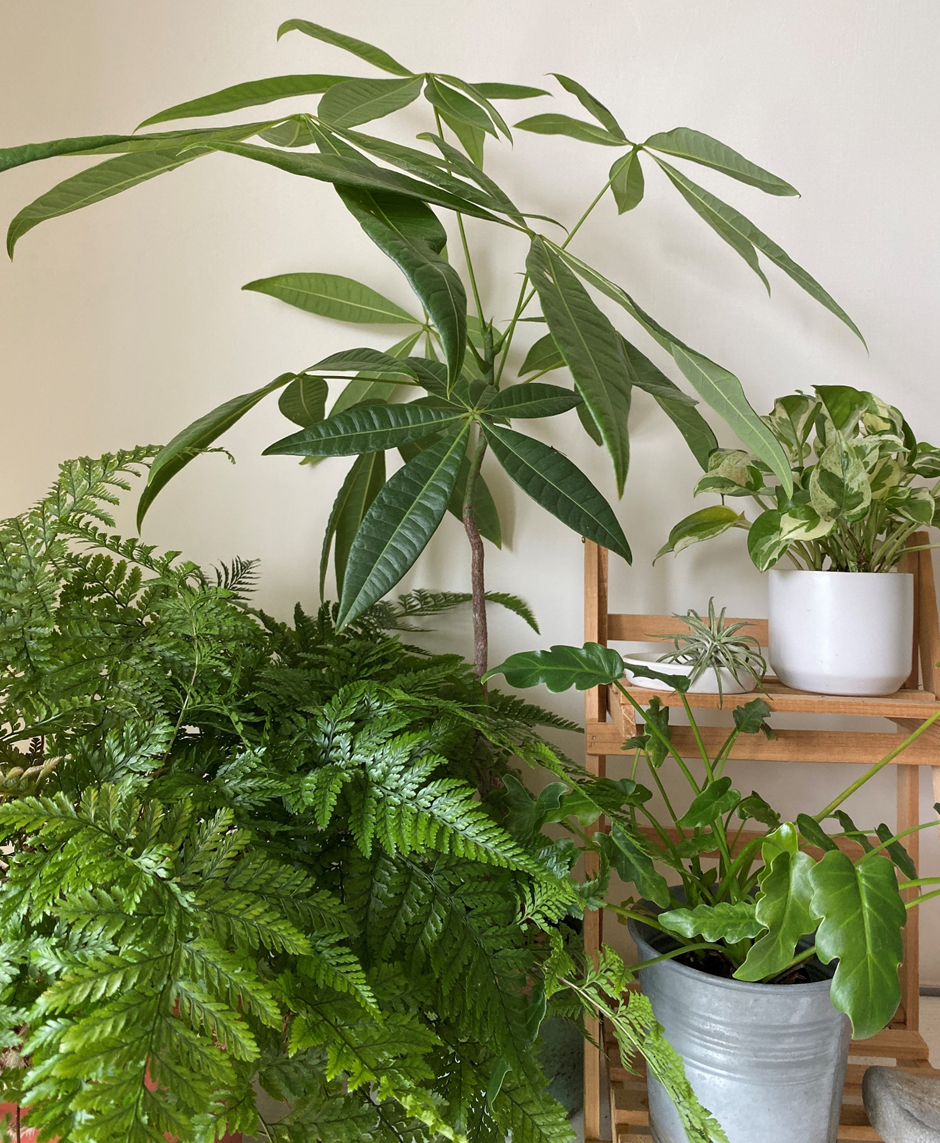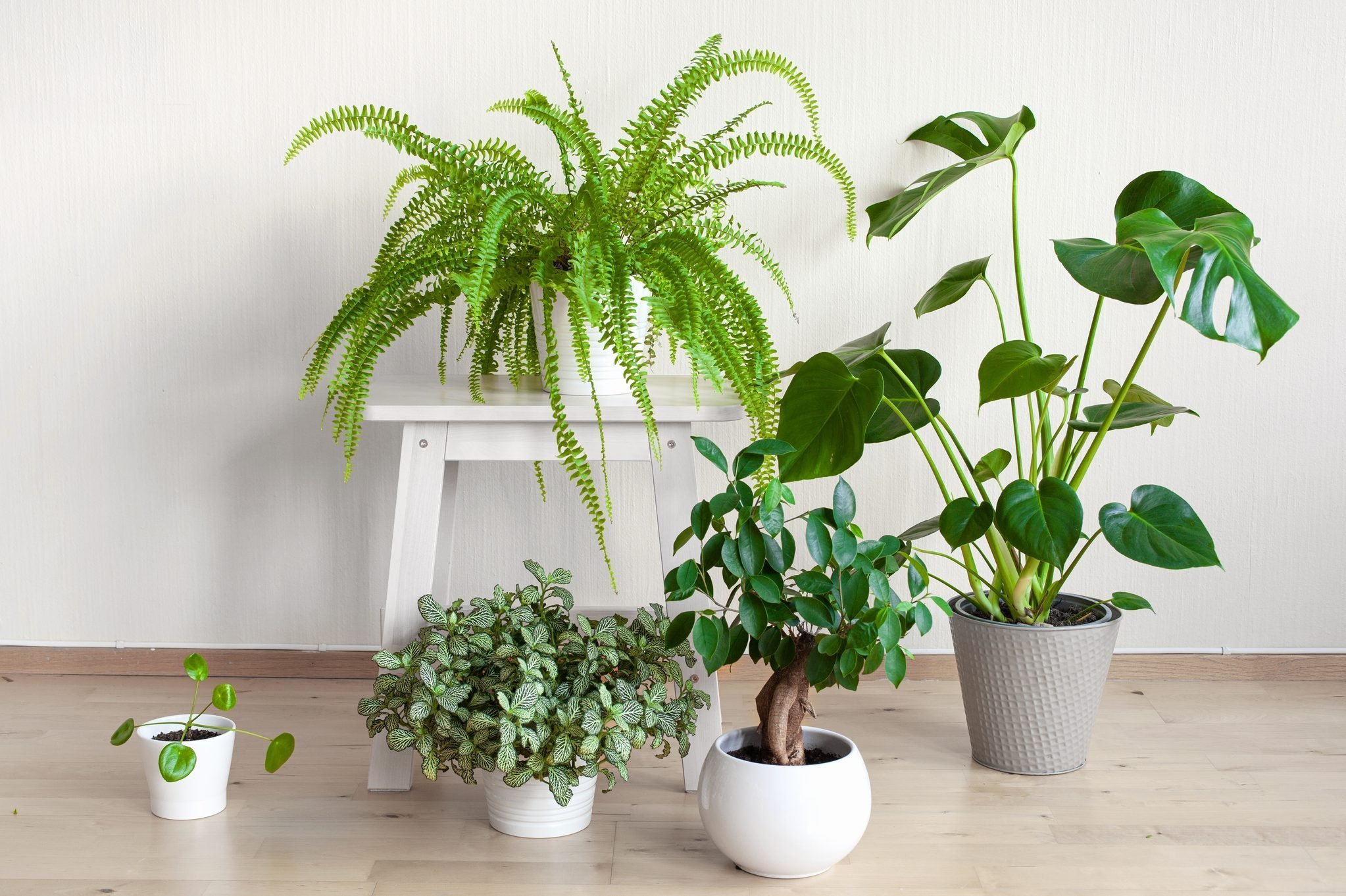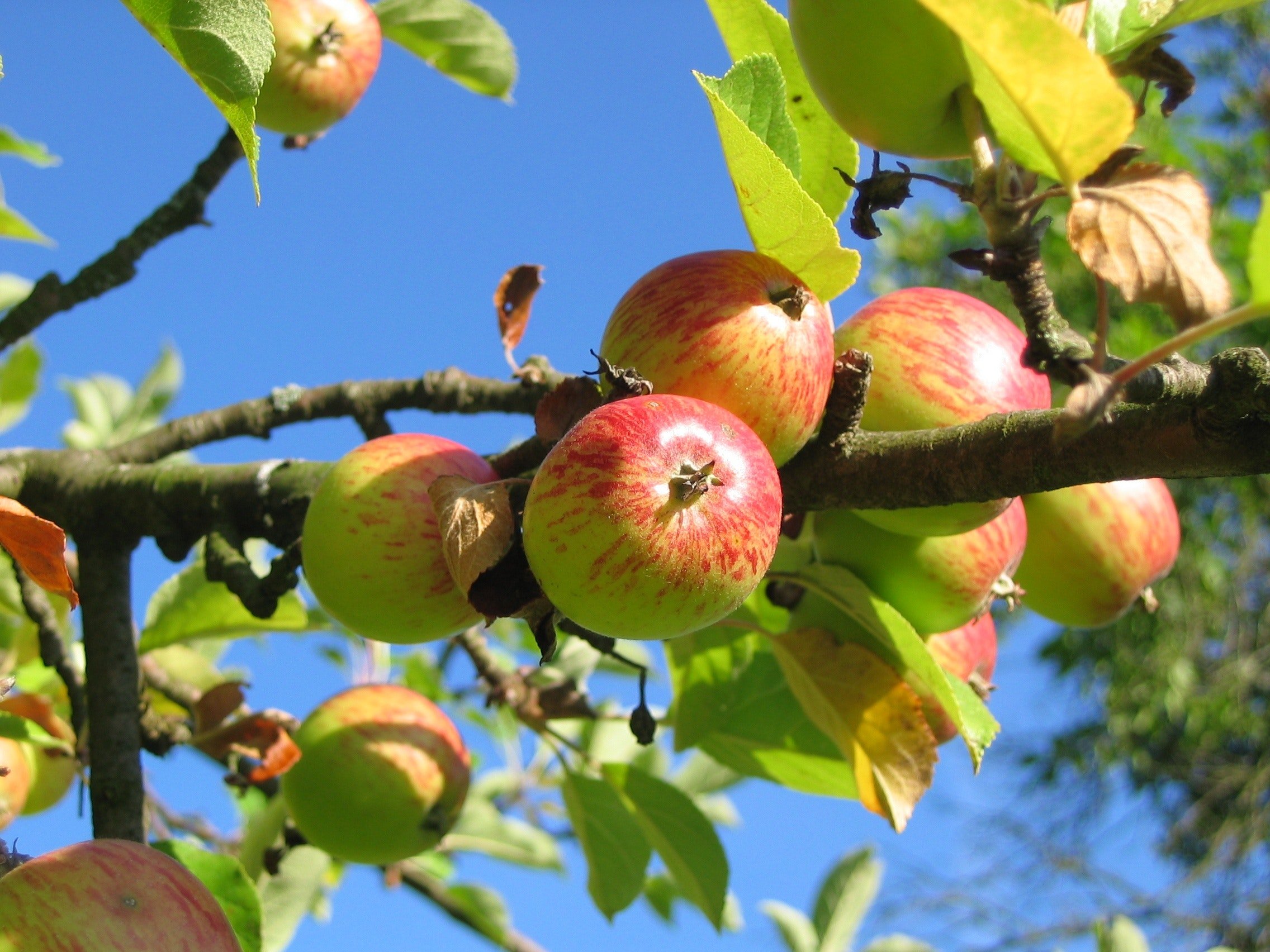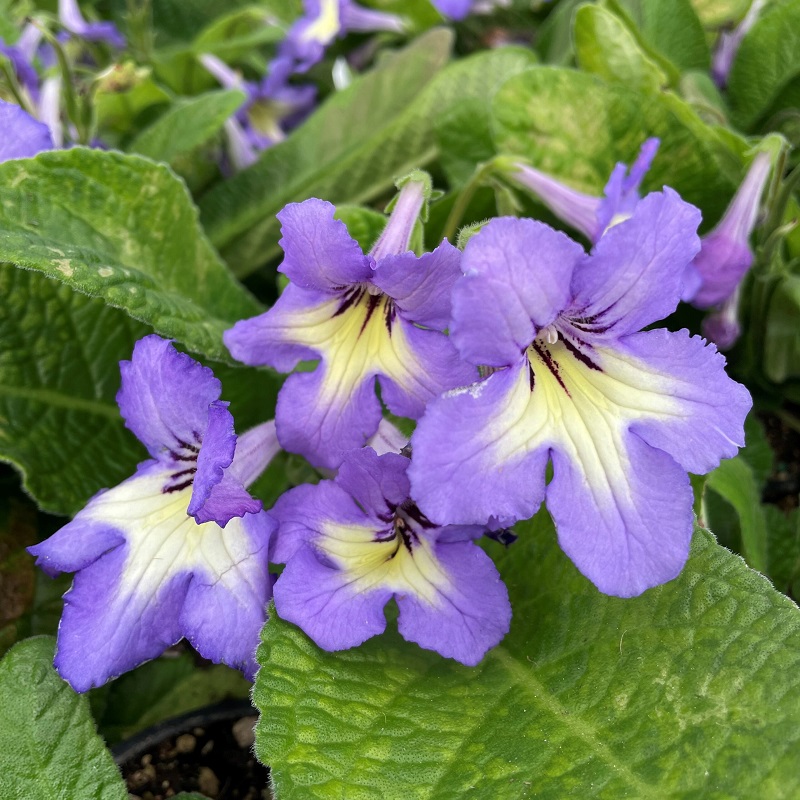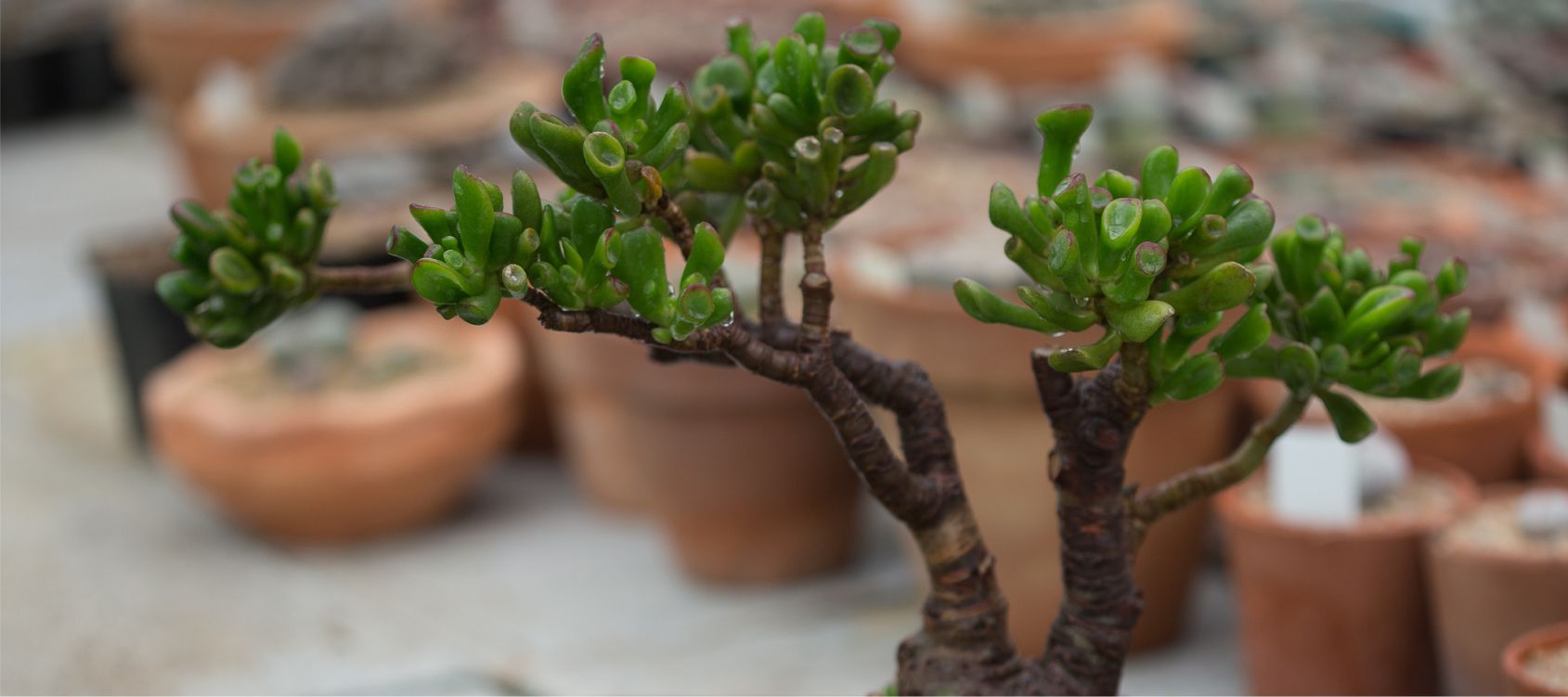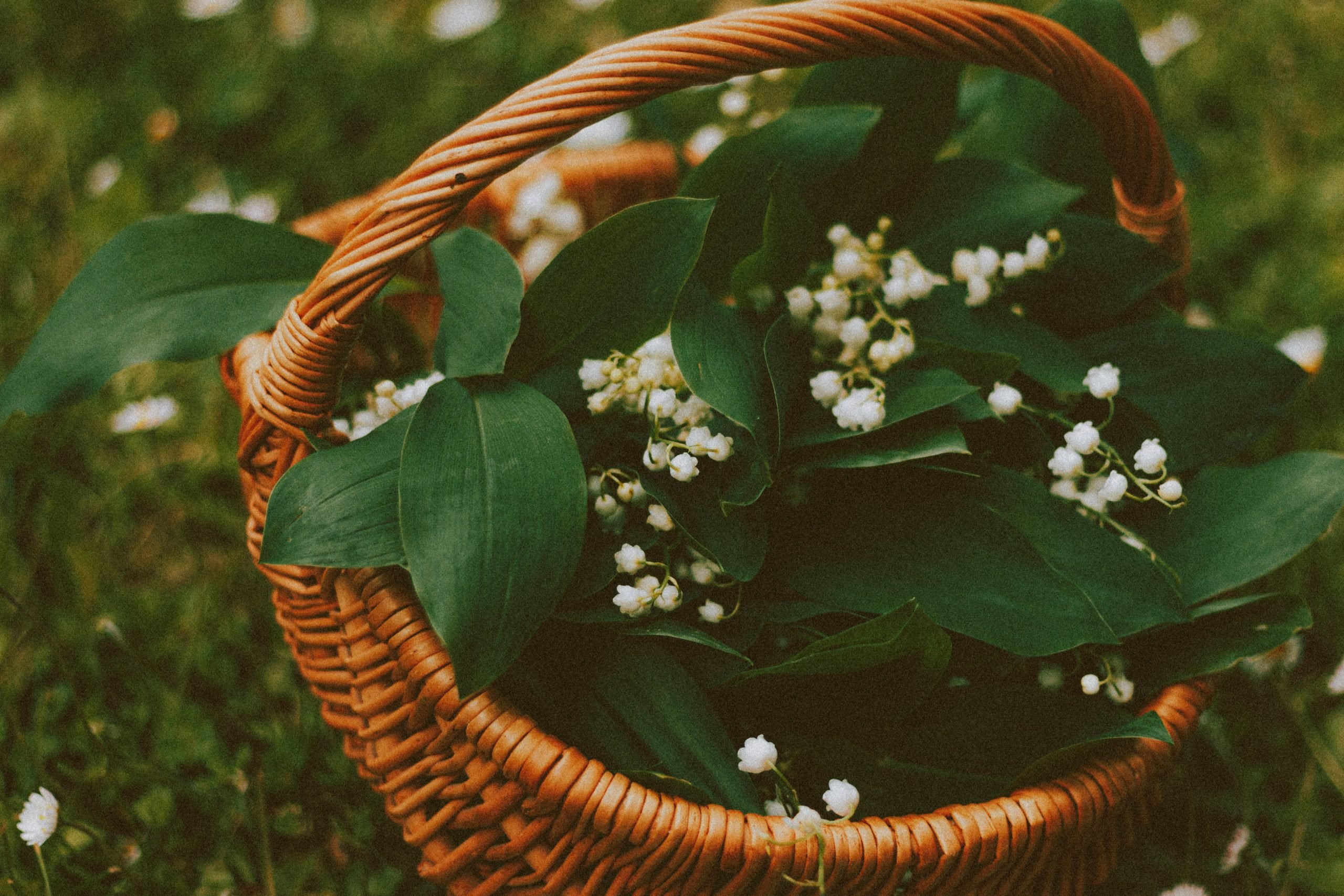How to Care for Tillandsia Usneoides ‘Spanish Moss’ for Beginners
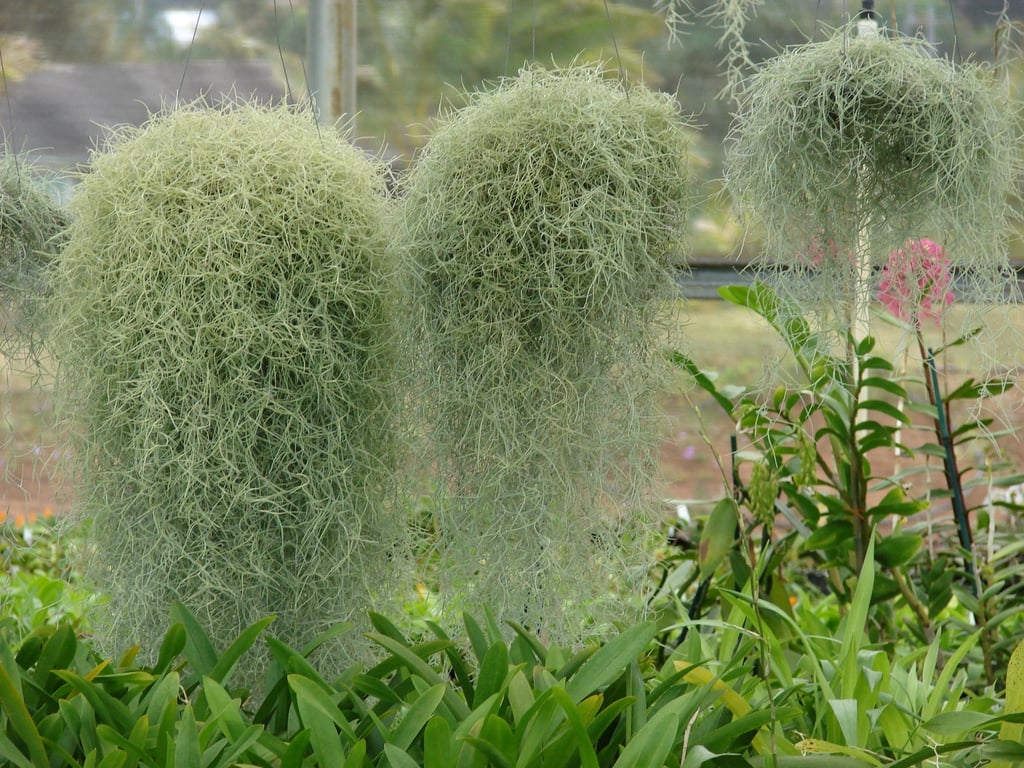
Table of Contents
Spanish Moss, also known as Tillandsia usneoides or Spanish Beard, is an air plant that grows on other plants than in soil. Tillandsia is a unique plant that has hanging silvery-greyish leaves and wiry stems. The plant is native to the tropical parts of America, so it grows well in humid conditions. Like other plants, it can be grown indoors or outdoors, according to your liking.
The elegant trailing plant requires minimal watering, like onetime a week in the summer and every 2-3 weeks in winter. It comes with evergreen foliage and can bear yellowish-green or blue flowers in the late spring or autumn seasons. So, find a sunnier, sheltered spot for the plant and let it add some character to your place.
Therefore, if you decide to grow and care for the Spanish Moss plant, this article includes everything you’ll need.
How to Grow Spanish Moss
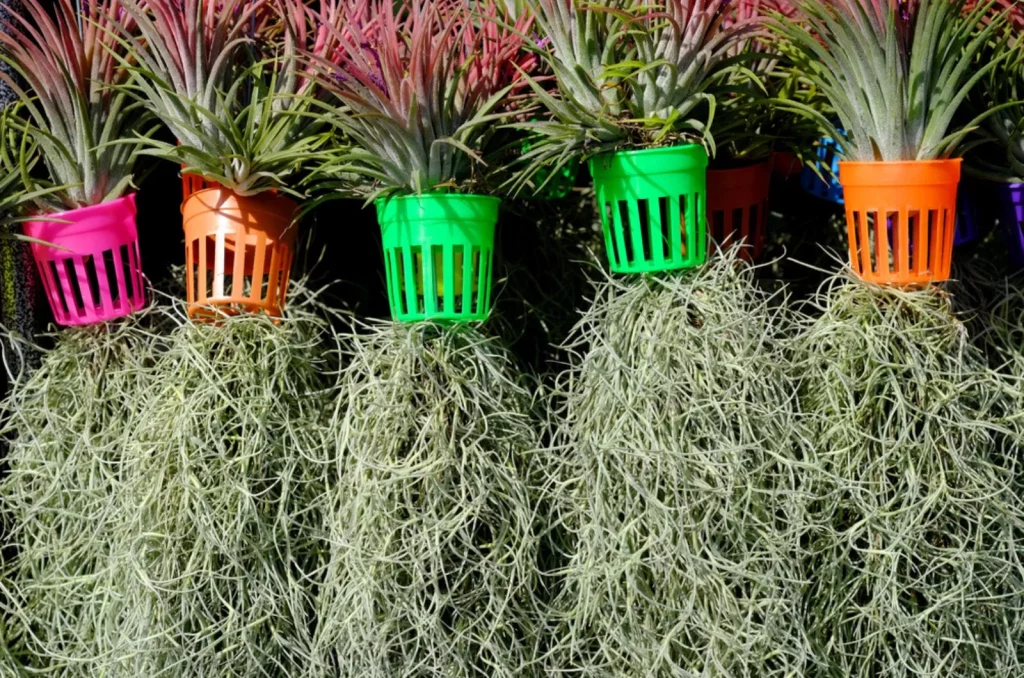
The best part about growing Spanish Moss is you don’t need a pot or a container to sow them. You can suspend it on a hanger or grow it on other plant branches like oak or cypress. You can also place it on wood and let it dangle.
This plant will thrive if you live in a place with moderate to high humidity. It requires a bright location with indirect lighting and good air circulation. If Tillandsia doesn’t get much air reaching its root and all its strands, it could form a dense ball and eventually die. Watering the plant regularly while it’s still growing is necessary to keep it healthy. Growing Spanish Beard directly from the seeds could take a while as it is an unpredictable and slow-growing plant. And even after a few months, it will only be grown up to 1cm tall. Also, if you pot the plant in a container, choose the one that allows it to be easily taken out for watering or has an excellent drainage system. So, people in the UK prefer purchasing the fully-grown plant from nurseries or online.
Caring Tips for Spanish Moss
Spanish Moss is an easy-to-grow air plant, even if you are a newbie. It doesn’t require much care and doesn’t even attract that many bugs or diseases. The only thing to remember while planting it is choosing a well-lit spot.
1. Provide Adequate SunLight
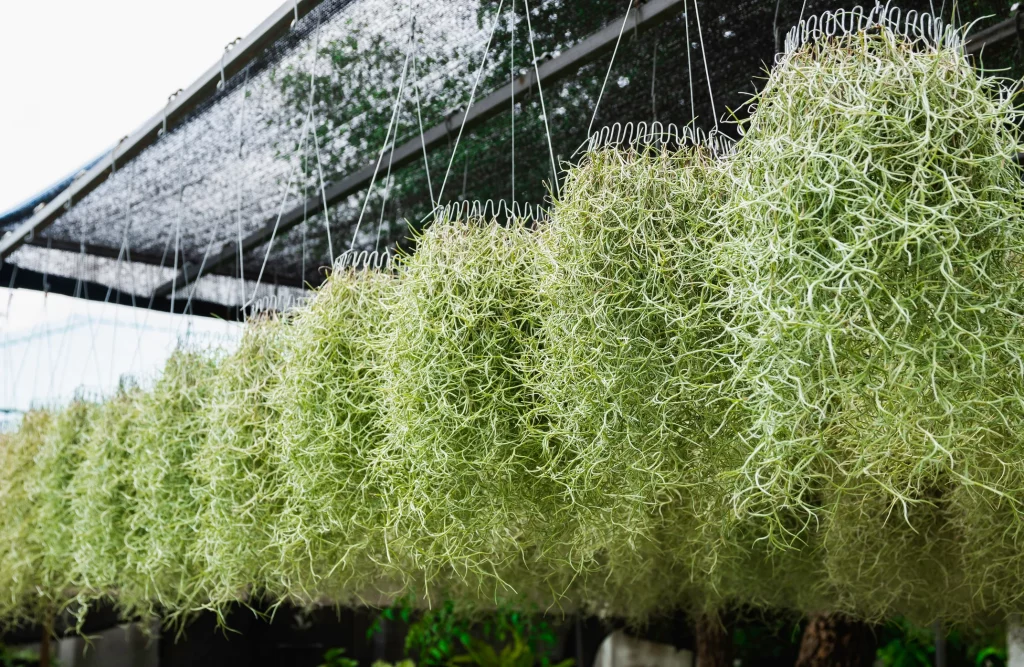
Bromeliad plants grow naturally under the right atmosphere. And finding a suitable spot for them is very crucial for their growth. They belong to tropical regions, so their ideal environment is moderate and indirect light. Too much sun exposure will dry the leaves, and too little light will make the plant stagnant. When grown indoors, place it on windowsills or nearby a window. Remember that the plant prefers sunny spots, so don’t put them on the north-facing or south-facing windows. Keep them on east or west-facing windows for moderate yet sheltered sun exposure.
2. Watering It in Prudent Way
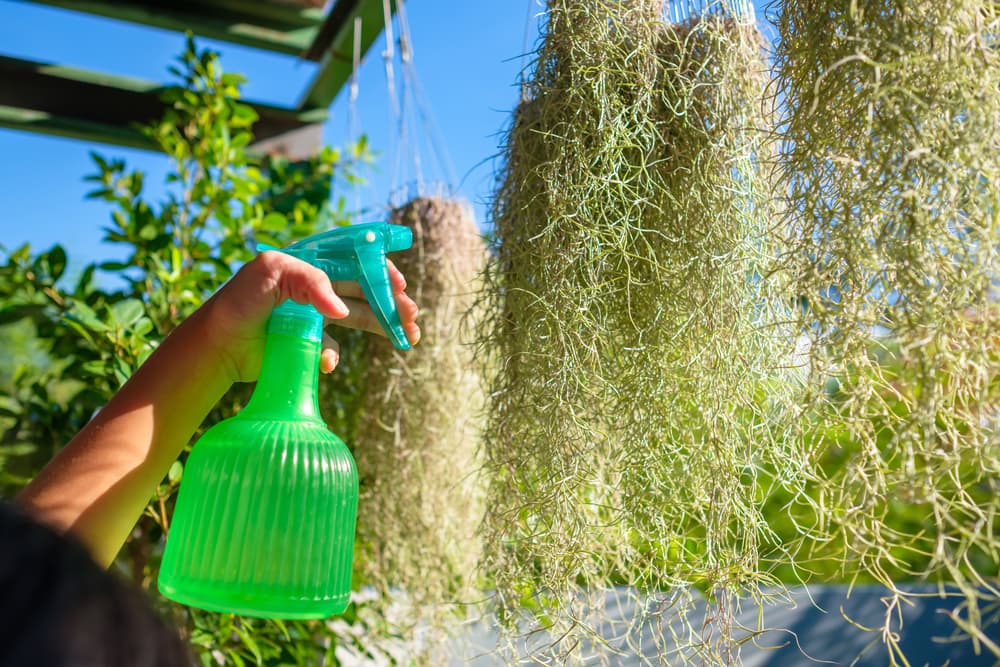
Watering plants like Tillandsia could be challenging as they don’t grow on soil. So, you mist the plant regularly. And, according to the weather conditions in your place, hydrate the plant by soaking it in water. Check the plant’s moisture first and dip it in water for around an hour, once or twice a week. Spanish Moss can rot if it stays wet for a longer time. Once submerging is done, shake it off lightly to get rid of excess water. And leave it to dry off completely before hanging it again. Using either rainwater or de-chlorinated tap water promotes bushier leaves.
3. Check the Soil
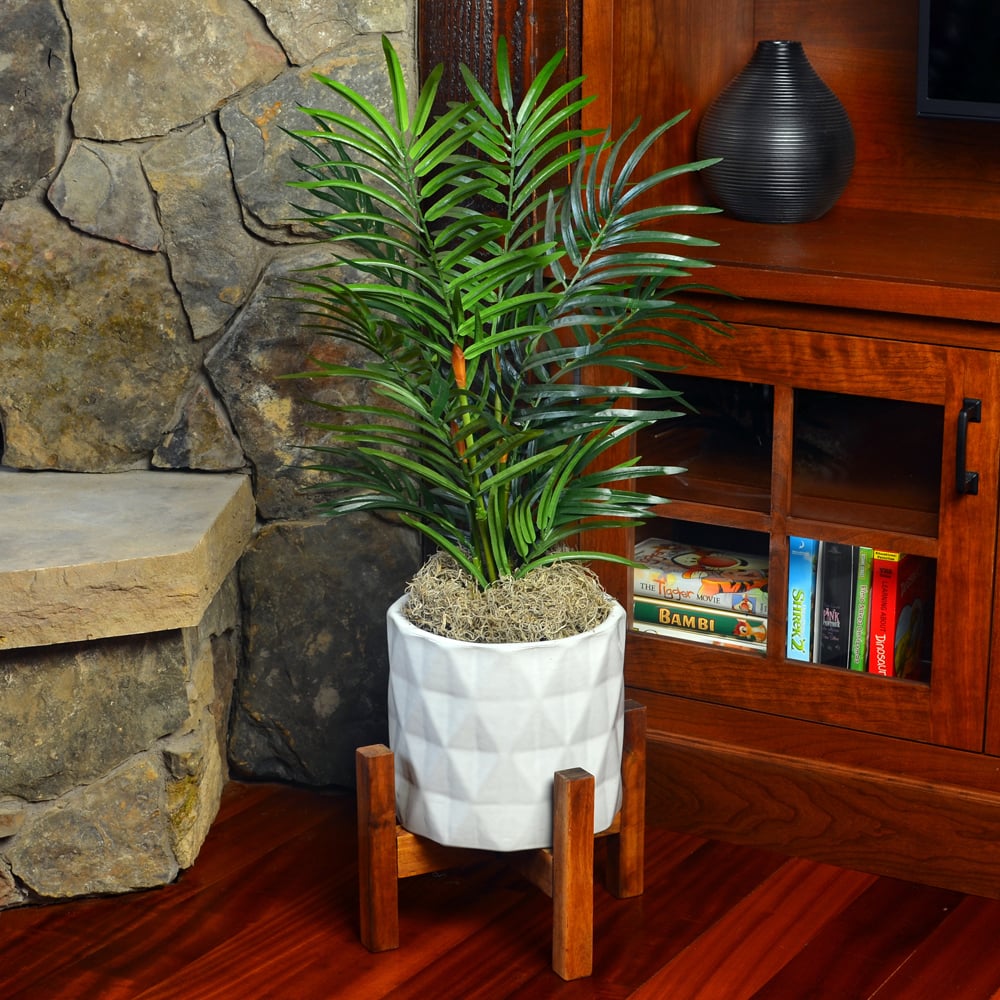
Spanish Moss is an air plant that doesn’t really require soil. It prefers growing on other plants or hanging down from the hooks. However, it can be cultivated using oak or bald cypress tree branches. Using wireframes also help, just don’t bundle all the leaves together, or else it wouldn’t grow accurately. If you pot them, ensure the soil has good airflow and doesn’t sog in water. Adding some pebbles or stones makes up for a perfect potting plant. Spanish Moss is a decorative plant, so growing them in terrariums with suitable sand can add a lively touch to your place.
4. Temperature and Humidity
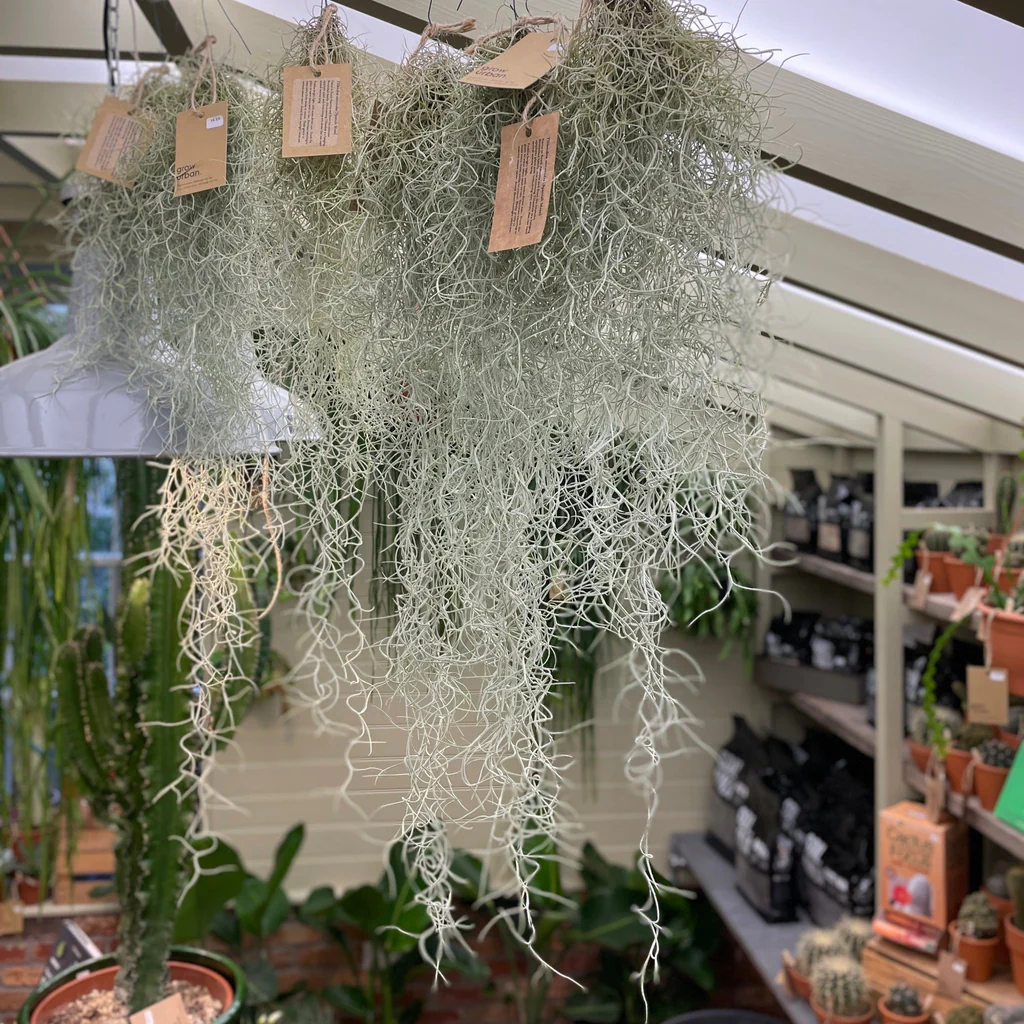
Spanish Moss can withstand lower and higher temperatures alike. Temperatures between 10-21 degrees Celcius are ideal enough. The plant can even tolerate a light frost, but too much cold could make it go dormant. However, colder temperatures don’t kill your plant, and they retain their form when summers come. When providing a humid atmosphere, indoor plants may require boosted humidity. You can do so by placing a humidity tray below the potted plant. Or, you can put all your houseplants together in one place to establish a microclimate. Using a humidifier also works.
5. Feeding Nutrients
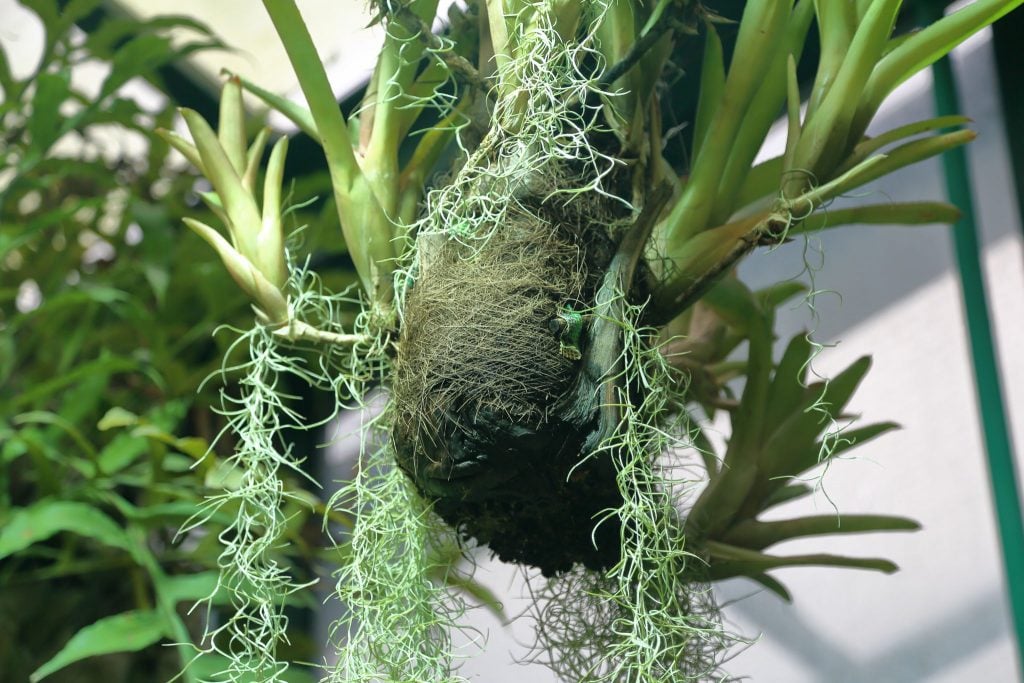
If you are growing Tillandsia using Cypress and Oak plants, you should know that they have high levels of foliage leeching. So, feeding your plant with extra nutrients and minerals is quite necessary. Using orchid fertilizers or any light powdered fertilizerduring their growing period could do the trick. When feeding the plant, it is also recommended that you simply soak the stems in a mixture of water and fertilizer. The fertilizer should be diluted to 1/8th part, as the excess of it could leave the plant with dried leaves. You can feed Tillandsia every two weeks to keep it healthy.
Different Types of Spanish Moss Plant
Tillandsia is an epiphyte plant that grows on healthy trees instead of soil. It has over 600 species that you can grow, and the most grown are Silver Ghost, Odin’s Genuina and Kimberly.
1. Silver Ghost
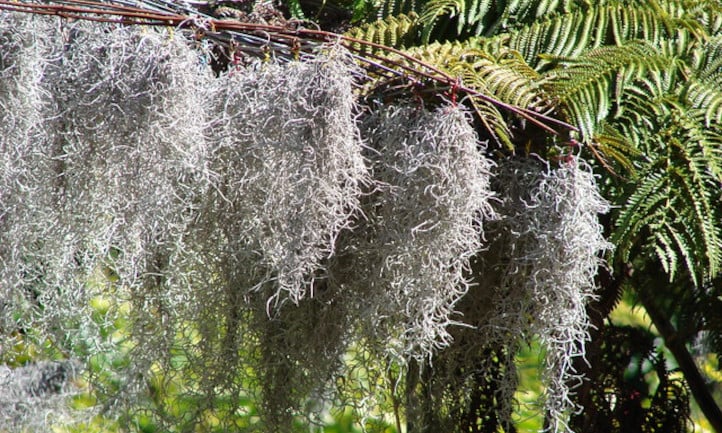
Silver Ghost is the most commonly planted species. It has smooth thread-like leaves which appear grey-green in colour. If maintained significantly, the plant bears little green flowers.
2. Old Man’s Gold
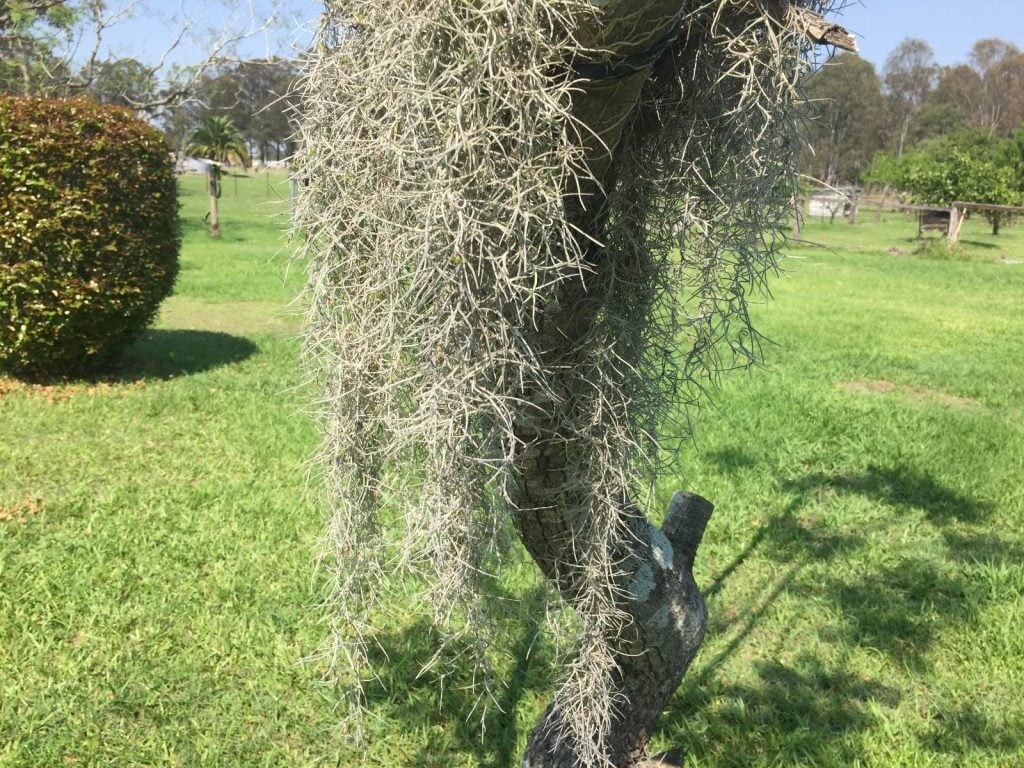
This plant is a mixture of Tillandsia usneoides and Tillandsia crocata species. Old Man’s Gold plant produces large yellow flowers and silver-green leaves, falling under the dwarf category.
3. Maurice Robusta
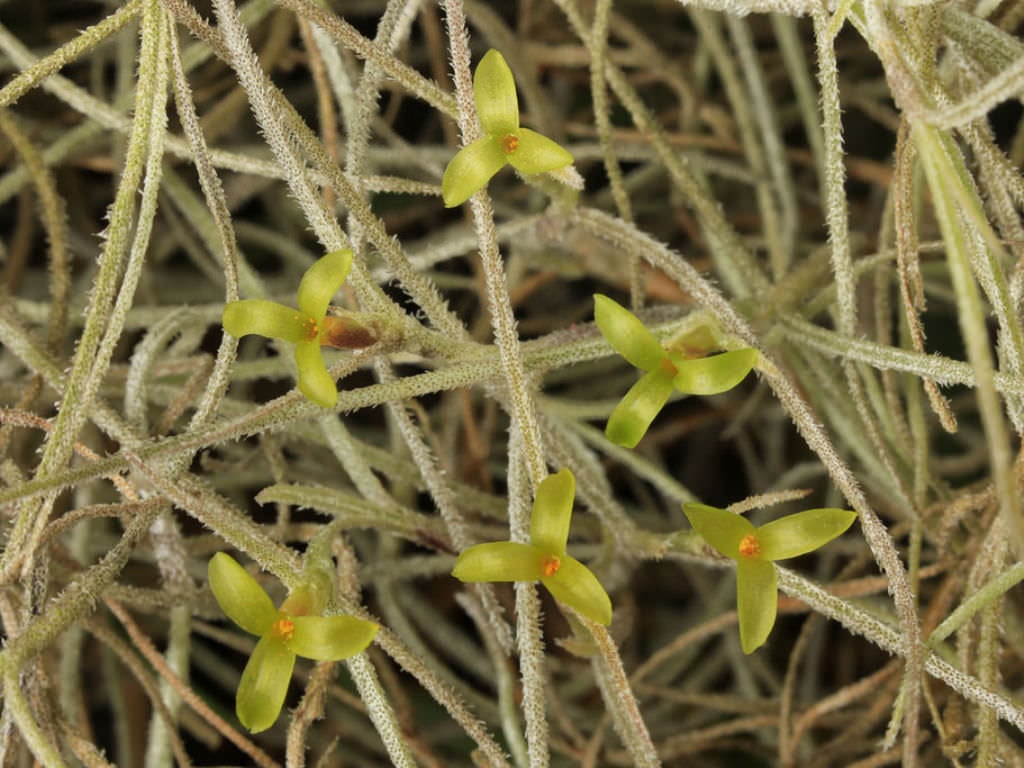
Maurice species is wildly popular in Australia. It has thicker grey-greenish leaves that bloom beautiful yellow-green flowers. It gets colour after the plant dries off wholly, and if watered recently, the leaves turn silver.
4. Odin’s Genuina
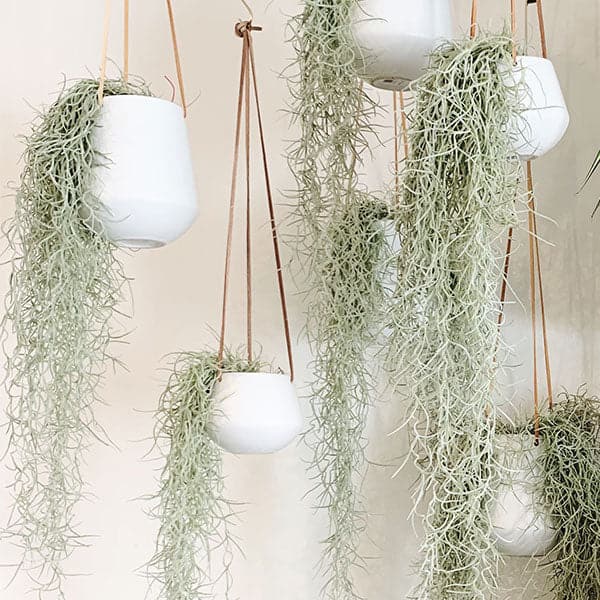
Odin’s Genuina is mainly grown and seen in Europe. Its fine-looking silver leaves that grow up to 4-6 cm tall and yellow-brownish flowers make it the best indoor plant.
5. Spanish Gold
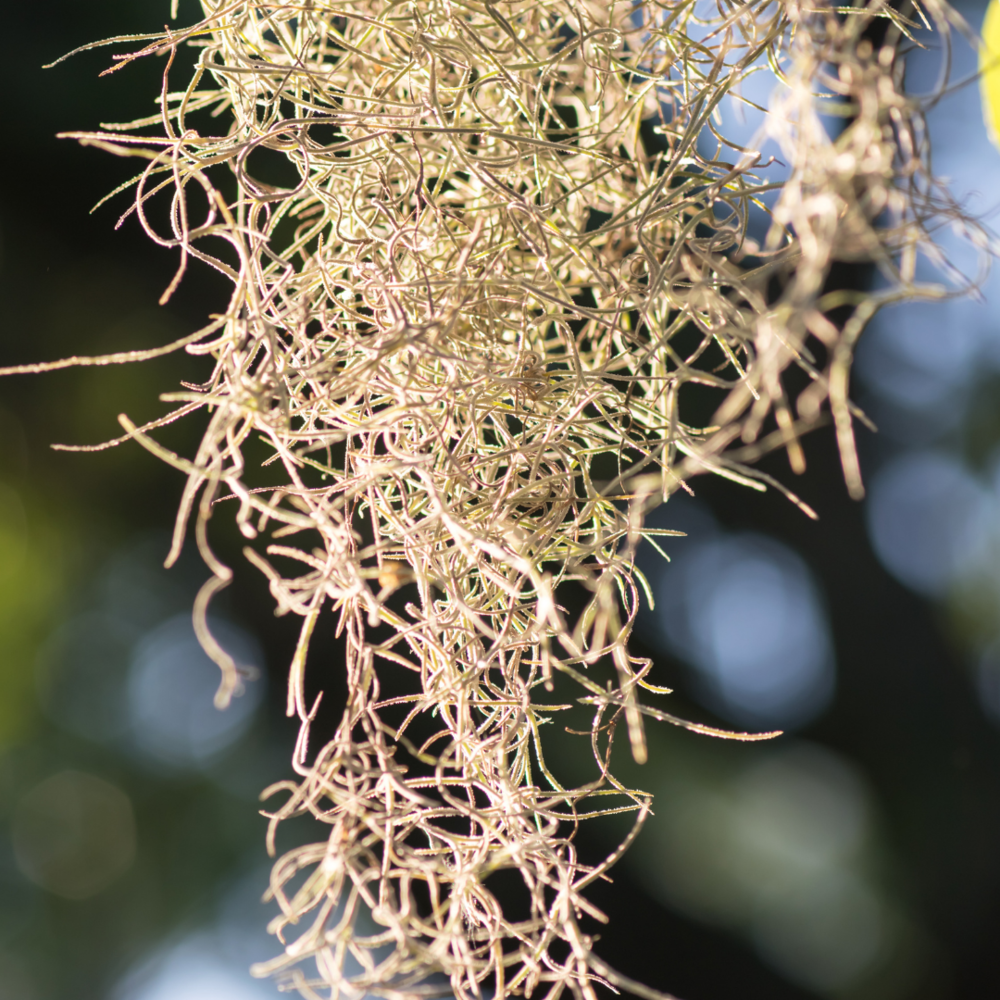
Spanish Gold has little yellow flowers on its greyish-green foliage, making it an attractive plant. It’s a widely cultivated plant that can be seen in Australian and New Zealand houses.
6. Tight and Curly
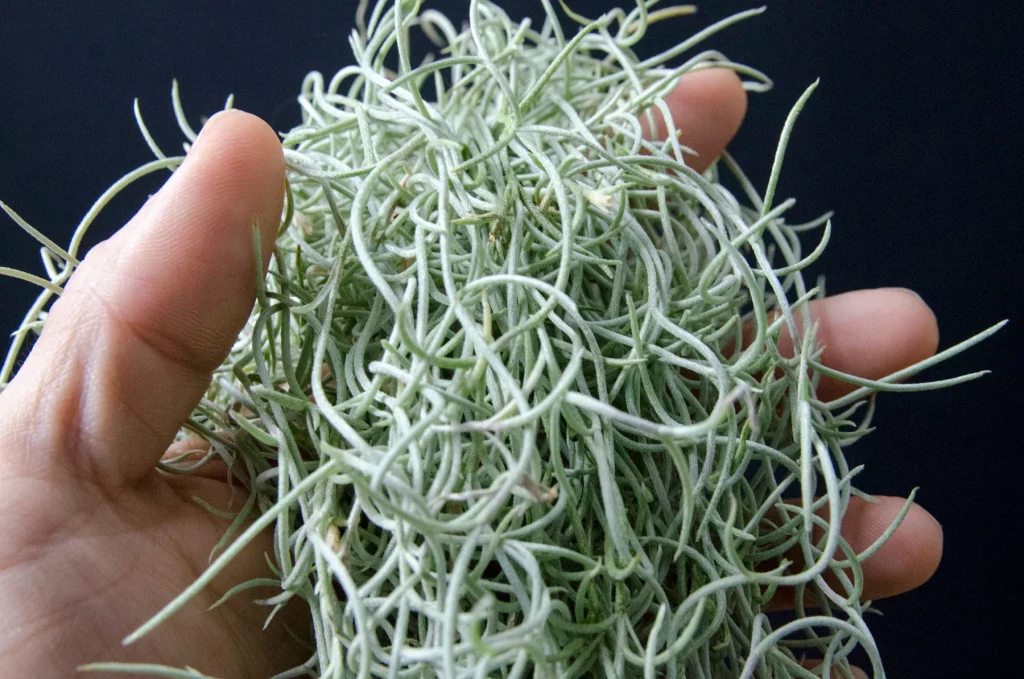
As the name suggests, this species produces thin leaves which are curled tightly together. This plant is mainly found in California’s flower gardens.
7. Kimberly
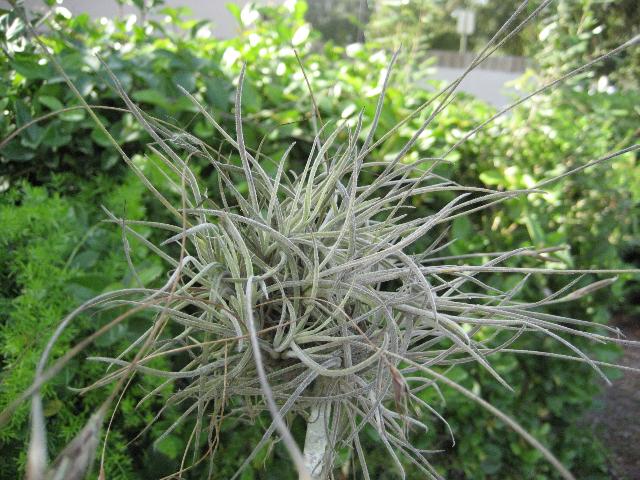
Kimberly or Ball Moss, also known as Tillandsia recurvata bears silvery-green slender leaves. This species forms a dense clump that makes it a dwarf plant to have in your household.
How to Propagate Spanish Moss

Propagating Spanish Beard is an effortless process. Start by separating the groups of strands cluttered together. Then, each one will slowly grow into a newer plant by forming dense mats of its own. Moreover, given the proper environment, the plant can grow up to 10-20 cm a year. When your plant stays in good shape, it bears beautiful small orange flowers. If pollinated, the flowers take up a fluffy kind of shape, just like dandelion parachutes. Obviously, the plant growth is slower, but if you stay patient, it will grow into a charming houseplant.
Common Issues to Look After
Tillandsia is a pest-free and disease-free plant. But, when growing it indoors, it could encounter a problem or two.
Over or Under Watering
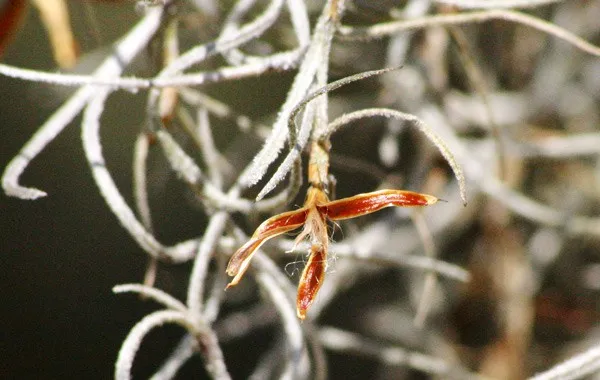
Watering the plant is tricky and could suffer from underwatering or overflooding problems. Your plant requires more moisture if its tips are turning brown. It’s also an indication of a lack of humidity. If your plant’s foliage is becoming brown or spongy, you have overflooded it. Let it completely dry off, shake the excess water and hang it back up. Your plant may rot with an excess of water.
Pests Issues
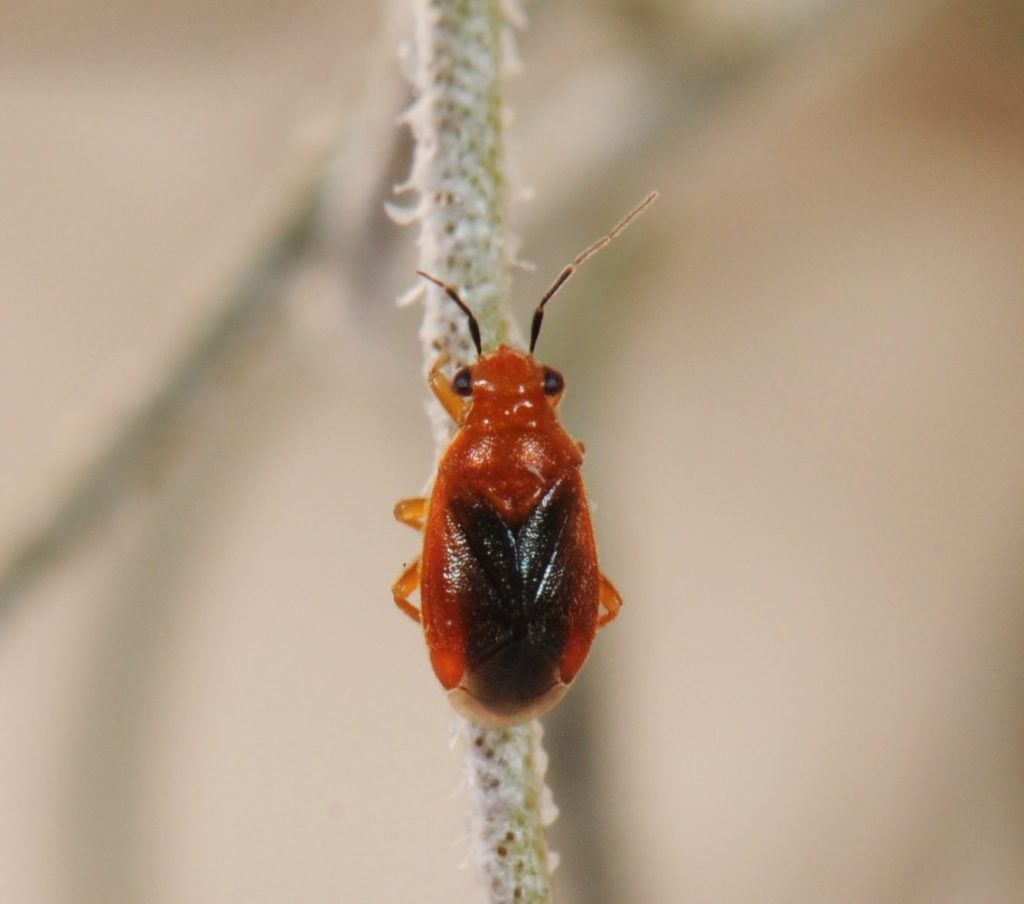
A spider called Pelegrina Tillandsia Kaston stays in the plant but is quite frankly harmless. Chiggers, spider mites, boll weevils or a few butterfly species are some pests that affect the plant. Using an insecticidal or miticidal spray can keep them away. If you have planted the Spanish Moss outside, you must protect them from frogs or birds to make a nest in them.
Final Thoughts
All in all, if you are looking for a unique-looking, decorative plant for your place, Spanish Moss is an excellent purchase. All you need is a hanging space with moderate sunlight, a hook or a hanger, and you are good to go. Being a low-maintenance air plant, it only asks for regular misting and proper watering once a week.
When hung in their natural state, on other plants or trees, it definitely lightens up the room. The leaves don’t require pruning or fall off if caught any infection. In fact, the plant is disease-free. And it only gets affected if you are not watering the plant accurately.
So, what are you waiting for? Go online or purchase the plant from a reputable supplier. Also, remember to check its foliage before hanging it out.
Frequently Asked Questions
Is Spanish Moss toxic?
No, Spanish Moss is not a toxic plant. In fact, it is used to feed animals like cattle and horses. If you have pets in your house, placing them far from their reach is best because they may damage it.
How Much Watering Does Spanish Moss Require?
Tillandsia usually requires regular spraying. Take the plant out every once a week and dip it in the water for up to an hour to keep it hydrated. Before hanging it back, shake it lightly to lose the extra moisture, and you are all set.
Does Spanish Moss purify the Air?
Yes, it helps purify the air as it grows in a good air-circulating environment. And could probably die because of lack of air. Placing it in any room other than the kitchen would be a good idea, as the cooking fumes could severely damage the plant.
How to Keep Spanish Moss Alive Indoors?
It’s easy to keep the plant alive both indoors and outdoors. They only require a sunny, sheltered setting where they can fully grow and charm up your place. Sow them on other plants and continue regular misting to keep them healthy and blooming.

